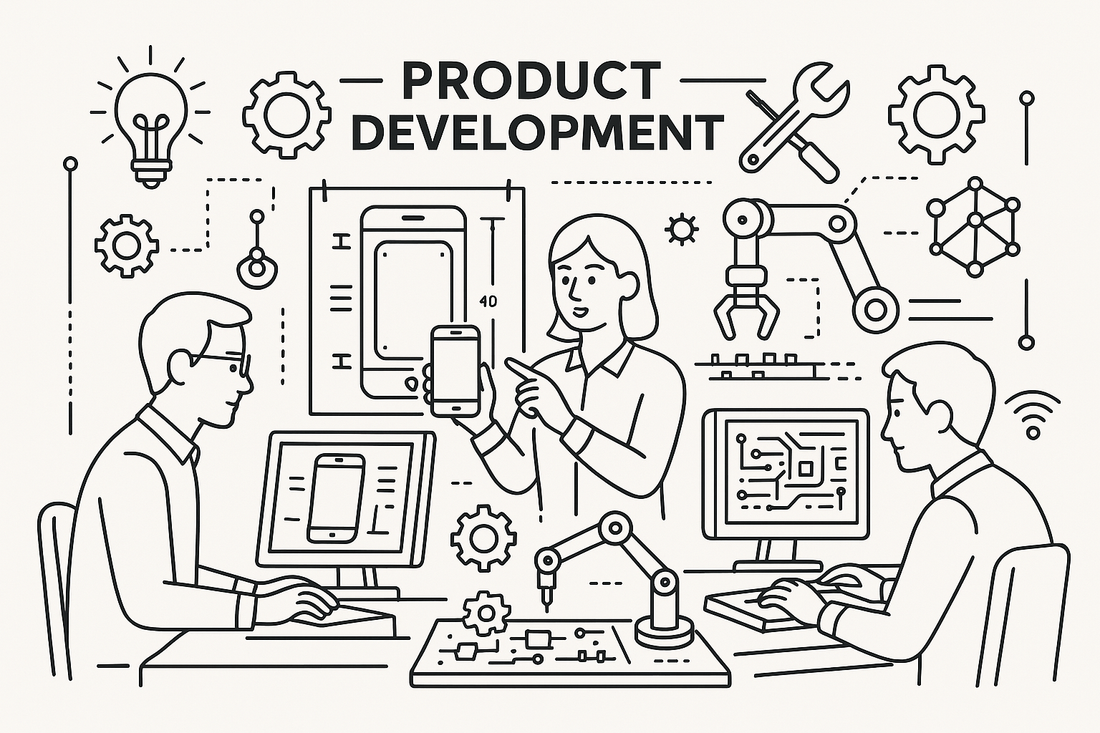
Harmonizing Aesthetics and Engineering: Products That Inspire and Perform
In the realm of product design, the interplay of aesthetics and engineering is paramount. Dieter Rams, the renowned industrial designer, emphasized that good design is both aesthetic and functional. At Hammer and Nail Studios, we believe that a product's visual appeal should seamlessly integrate with its functionality and also manufacturability. This synergy ensures that our creations not only captivate the eye but also serve their 1. intended purpose effectively and 2. deliver a high level of consistent quality.
The Interplay of Aesthetics and Engineering
Aesthetics in design encompasses the visual and tactile qualities that evoke emotional responses from users. Engineering focuses on the functionality, safety, and manufacturability of a product. Balancing these aspects is crucial; a product that is visually stunning but functionally deficient, or vice versa, fails to meet our holistic needs of the item.
Dieter Rams stated, "Good design makes a product useful", highlighting the inseparable nature of form and function in creating successful products.
Case Study: The Recessed Toilet Paper Holder with Storage Niche
At Hammer and Nail Studios, our Recessed Toilet Paper Holders exemplify the harmonious integration of aesthetics and engineering. At first look lighting and complex products hold a technical sexy vibe, but simple seeming products delivered with careful thought is very powerful. Our goal was to create a bathroom accessory that is visually appealing, space-saving, effortless function, and easy to install.
Function Aesthetics: We selected high-quality materials and a sleek design to ensure the holder complements various bathroom styles, adding a touch of elegance. Our take on industrial design.
Design Engineering and Manufacturability: We developed a design that is straightforward to install within standard wall cavities, ensuring structural integrity and durability. The choice of materials was guided by both aesthetic appeal and consistency of manufacturing, allowing for uncompromising quality in every build. At first the design choices compromised the list of desired functions.
The development process caught traction only when synergies started to appear between the right features and looks... Fits, finishes, dimensions, and shapes are intentional to ease install, create sturdiness, allow room to paint, and offer customizable usage. Process vs product development is the unseen balance that the engineer weighs - this is the second synergy that brings it all together.
This product demonstrates that thoughtful design can enhance user experience by addressing both visual and functional needs - through deeply intentional design and fabrication.
Strategies for Balancing Aesthetics and Engineering
Achieving a balance between aesthetics and engineering requires a collaborative and iterative approach:
-
Cross-Disciplinary Collaboration: Every customer type and business function has valuable insights to offer
-
User-Centered Design: As in Dieter's design philosophy and results
-
Prototyping and Testing: Play is the way to learn
-
Material Selection: Uncompromising selection
